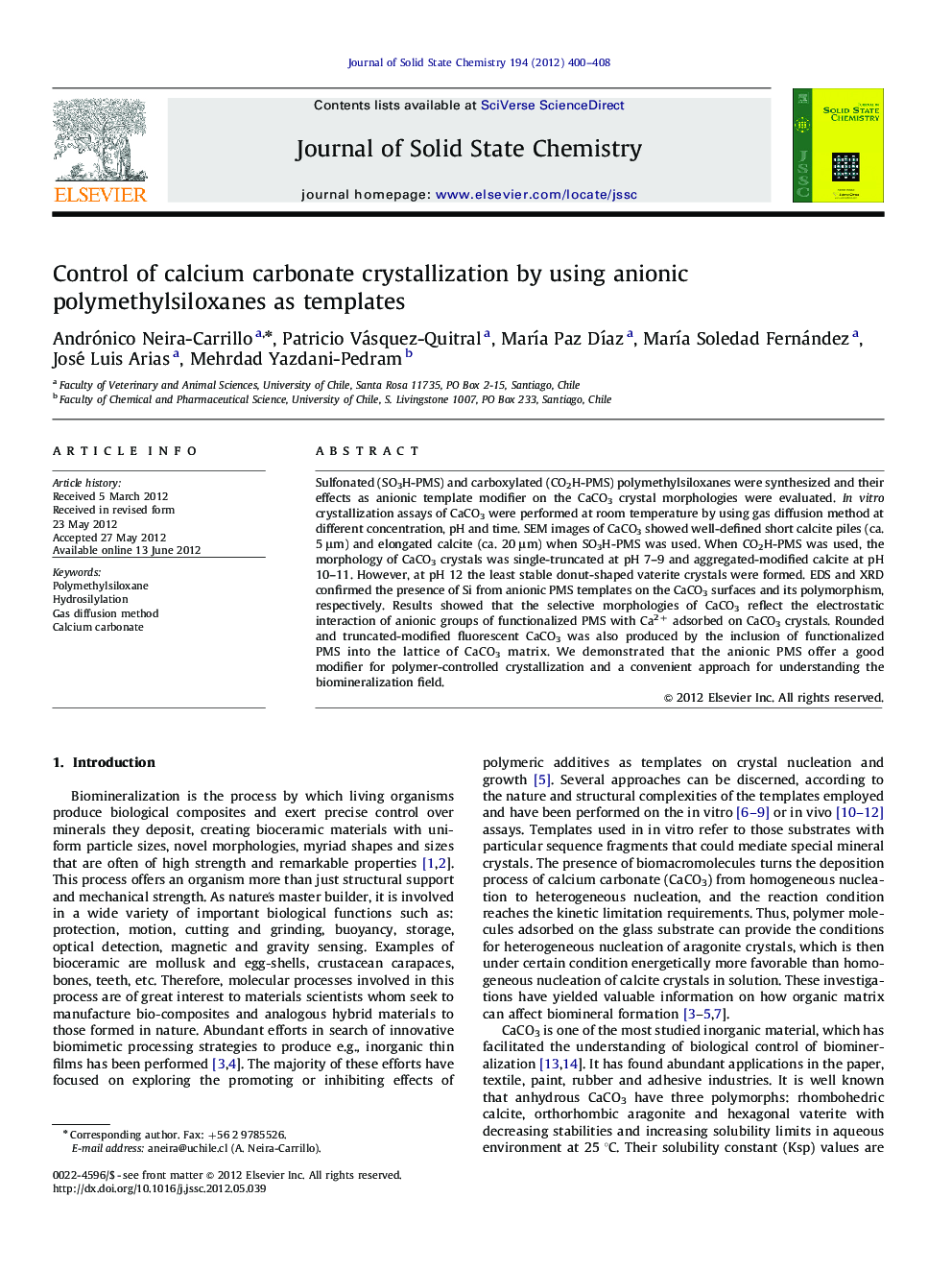| Article ID | Journal | Published Year | Pages | File Type |
|---|---|---|---|---|
| 1330295 | Journal of Solid State Chemistry | 2012 | 9 Pages |
Sulfonated (SO3H-PMS) and carboxylated (CO2H-PMS) polymethylsiloxanes were synthesized and their effects as anionic template modifier on the CaCO3 crystal morphologies were evaluated. In vitro crystallization assays of CaCO3 were performed at room temperature by using gas diffusion method at different concentration, pH and time. SEM images of CaCO3 showed well-defined short calcite piles (ca. 5 μm) and elongated calcite (ca. 20 μm) when SO3H-PMS was used. When CO2H-PMS was used, the morphology of CaCO3 crystals was single-truncated at pH 7–9 and aggregated-modified calcite at pH 10–11. However, at pH 12 the least stable donut-shaped vaterite crystals were formed. EDS and XRD confirmed the presence of Si from anionic PMS templates on the CaCO3 surfaces and its polymorphism, respectively. Results showed that the selective morphologies of CaCO3 reflect the electrostatic interaction of anionic groups of functionalized PMS with Ca2+ adsorbed on CaCO3 crystals. Rounded and truncated-modified fluorescent CaCO3 was also produced by the inclusion of functionalized PMS into the lattice of CaCO3 matrix. We demonstrated that the anionic PMS offer a good modifier for polymer-controlled crystallization and a convenient approach for understanding the biomineralization field.
Graphical abstractOptical photographs of rounded and truncated-modified fluorescent CaCO3 produced by the inclusion of sulfonated (SO3H-PMS) polymethylsiloxanes into the lattice of CaCO3 matrix. Insert represents the simulation of modified and fluorescent CaCO3 crystals using Software JCrystal, (2008).Figure optionsDownload full-size imageDownload as PowerPoint slideHighlights► We prepared two anionic polymethylsiloxanes (PMS) as templates. ► Their modifier capacity on the CaCO3 crystal morphologies was demonstrated. ► At pH 12, the least stable donut-shaped vaterite, was formed. ► EDS confirmed the presence of Si from anionic PMS templates on the CaCO3 surfaces. ► Fluorescent CaCO3 was produced by the inclusion of PMS into the CaCO3 matrix.
